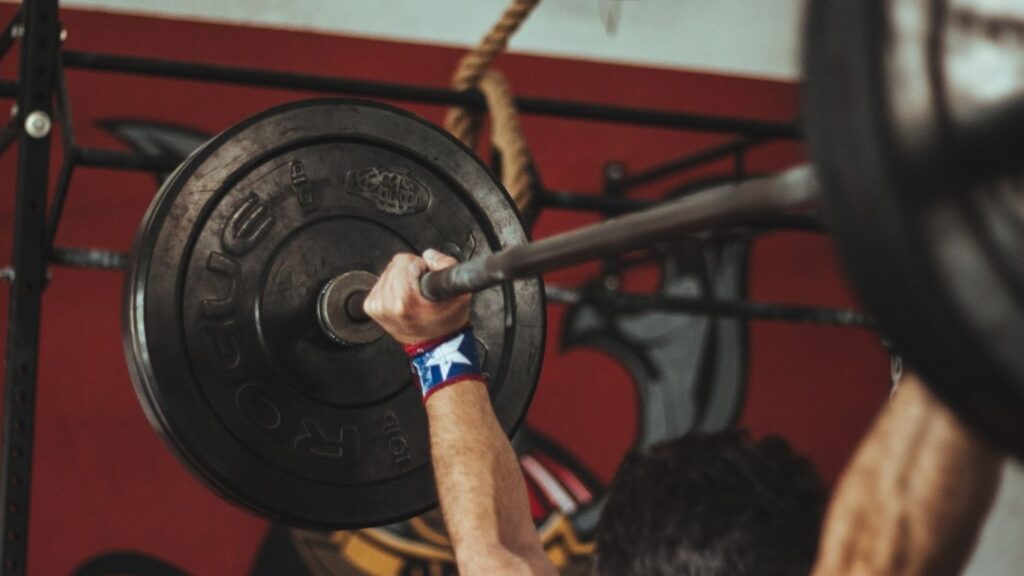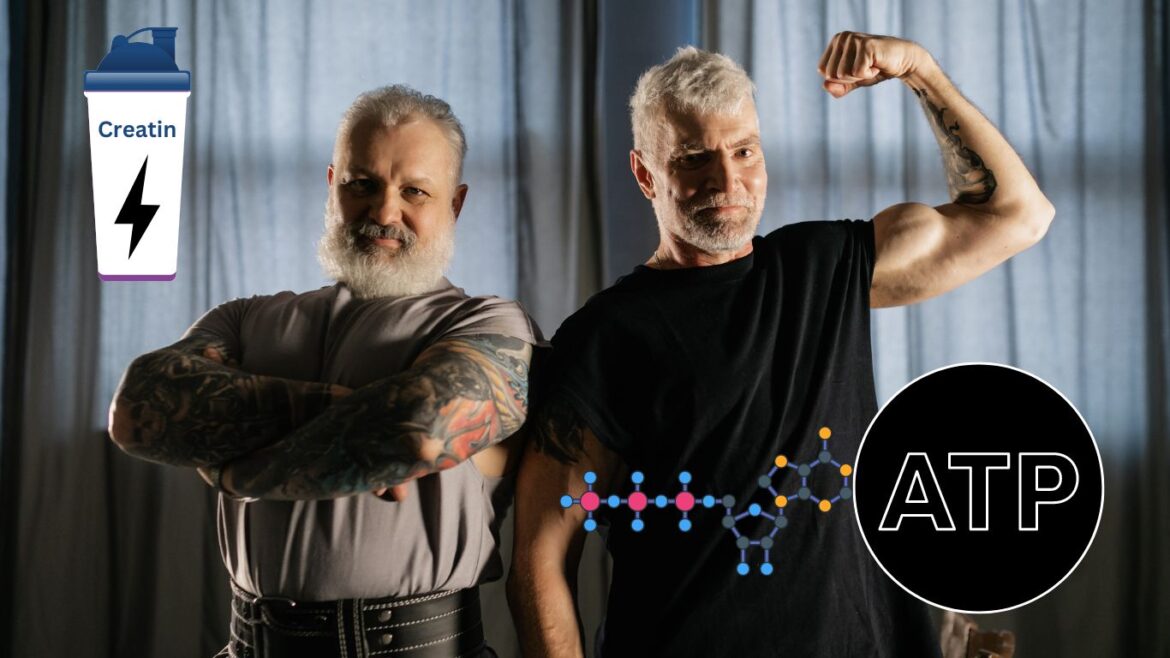Energy is the cornerstone of all physical activities, from simple daily tasks to intense workouts. It’s the fuel that powers our muscles during exercise, allowing for movement and strength. At the heart of this energy production are Adenosine Triphosphate (ATP) and creatine. ATP is often termed the ‘energy currency’ of the cell, essential for muscle contractions. Creatine, a naturally occurring compound in muscle cells, enhances the production of ATP, boosting energy availability during high-intensity activities. This blog will delve into the science of how ATP works, the role of creatine in increasing ATP availability, and the practical benefits of creatine supplementation for enhanced muscle power, endurance, and recovery in various physical activities.
Creatine and ATP: Understanding the Science Behind Muscle Power
The Basics of ATP and Muscle Contraction
- What is ATP (Adenosine Triphosphate):
- ATP is a complex organic chemical that provides energy to drive many processes in living cells, e.g., muscle contraction, nerve impulse propagation, and chemical synthesis.
- Known as the “energy currency of the cell,” ATP stores and transports chemical energy within cells.
- Role of ATP in Muscle Contraction:
- Muscle contraction is powered by ATP. When ATP is hydrolyzed (broken down), it releases energy.
- This energy is essential for the actin and myosin muscle fibers to interact, causing the muscle to contract.
- ATP binds to the myosin head, allowing the myosin to attach to actin and pull, which shortens the muscle and produces contraction.
- Usage and Regeneration of ATP During Exercise:
- During exercise, muscles rapidly deplete available ATP as they contract.
- The body regenerates ATP from ADP (Adenosine Diphosphate) and phosphate through three main pathways: direct phosphorylation by creatine phosphate, anaerobic glycolysis, and aerobic respiration.
- The choice of pathway depends on the duration and intensity of the exercise. Creatine phosphate provides quick energy for short bursts of activity, while glycolysis and aerobic pathways sustain longer activities.

Creatine – What Is It?
- What is Creatine:
- Creatine is a naturally occurring compound in the human body, synthesized primarily in the liver and kidneys.
- It is composed of three amino acids: arginine, glycine, and methionine.
- Natural Occurrence in the Body:
- Creatine primarily accumulates in muscle cells, where it plays a critical role in energy production, especially during high-intensity, short-duration exercises.
- Small amounts are also found in the brain, heart, and other tissues.
- Dietary Sources of Creatine:
- Red meat and fish are the most significant dietary sources of creatine. For instance, beef, pork, salmon, and tuna have high creatine levels.
- Vegetarians generally have lower creatine stores due to the absence of these sources in their diet.
- Storage in Muscle Cells:
- In muscle cells, creatine is stored in the form of phosphocreatine.
- Phosphocreatine serves as a rapid source of energy by donating a phosphate group to ADP to regenerate ATP, the energy currency of the cell.
- Approximately 95% of the body’s creatine is stored in skeletal muscles, with the remaining 5% distributed in the brain, kidneys, and liver.
How Creatine Enhances ATP Production
- Creatine and ATP Relationship with a Focus on Creatine Phosphate:
- Creatine phosphate, also known as phosphocreatine, acts as a quick-release reservoir of high-energy phosphates in muscle cells to replenish ATP.
- ATP (Adenosine Triphosphate) is the primary energy carrier in cells, crucial for muscle contractions. During exercise, ATP is broken down to release energy, resulting in ADP (Adenosine Diphosphate).
- Creatine phosphate donates its phosphate group to ADP, converting it back to ATP almost instantaneously.
- The Phosphocreatine System and ATP Replenishment:
- The phosphocreatine system is one of the body’s ways to maintain ATP levels during high-intensity activities that last for a few seconds, such as sprinting or heavy lifting.
- This system operates without the need for oxygen, making it ideal for quick bursts of energy.
- Phosphocreatine levels can sustain ATP production for about 5 to 10 seconds of intense physical activity, after which other metabolic pathways take over.
- Impact of Increased Creatine Levels on ATP Regeneration:
- Supplementing with creatine increases the stores of creatine phosphate in the muscles, which directly enhances the capacity to regenerate ATP.
- With more available creatine phosphate, athletes can perform high-intensity exercises at a higher intensity and for longer periods before fatigue sets in.
- This enhanced ATP regeneration capability means quicker recovery between sets and exercises, allowing for more volume and intensity, which are key factors in muscle growth and strength gains.

Practical Benefits of Creatine Supplementation
- Research Findings on Creatine Benefits:
- Muscle Strength: Studies consistently show that creatine supplementation can significantly increase muscle strength and explosive power, particularly in activities involving short bursts of intense activity.
- Endurance: While creatine is better known for enhancing short-term performance, some evidence suggests it may also help with endurance by improving efficiency in ATP regeneration.
- Recovery: Creatine can reduce muscle cell damage and inflammation following exhaustive exercise, leading to quicker recovery times between training sessions.
- Who Benefits Most from Creatine Supplements:
- Athletes and Bodybuilders: Ideal for those engaging in high-intensity, explosive sports like sprinting, weightlifting, and football where quick energy replenishment is crucial.
- Older Adults: Can help combat age-related muscle loss and improve strength and endurance, contributing to better overall physical function.
- Recreational Exercisers: Even casual gym-goers may find improvements in their performance and recovery speeds.
- Addressing Myths and Misconceptions:
- Kidney Damage: Extensive research has debunked the myth that creatine supplementation causes harm to the kidneys in healthy individuals.
- Water Retention: While creatine can cause water retention, this is mostly intracellular and actually helps with muscle function and growth.
- Only for Athletes: Creatine benefits are not solely confined to elite athletes; it can enhance physical performance and muscle health in a wide range of people.

Conclusion
The interplay between creatine and ATP is pivotal for enhancing muscle power and optimizing workout performance. Through the regeneration of ATP, creatine supplementation not only boosts strength and endurance but also aids in quicker recovery between intense physical activities. Whether you’re an athlete seeking peak performance, an older adult aiming to maintain muscle health, or someone simply looking to improve your fitness regimen, understanding and potentially utilizing creatine can be a game changer. Always consider consulting with a healthcare professional before starting any new supplement to ensure it aligns with your individual health needs and fitness goals.
Also read: How Much Protein Is Enough for You to Build Muscle? A Guideline
